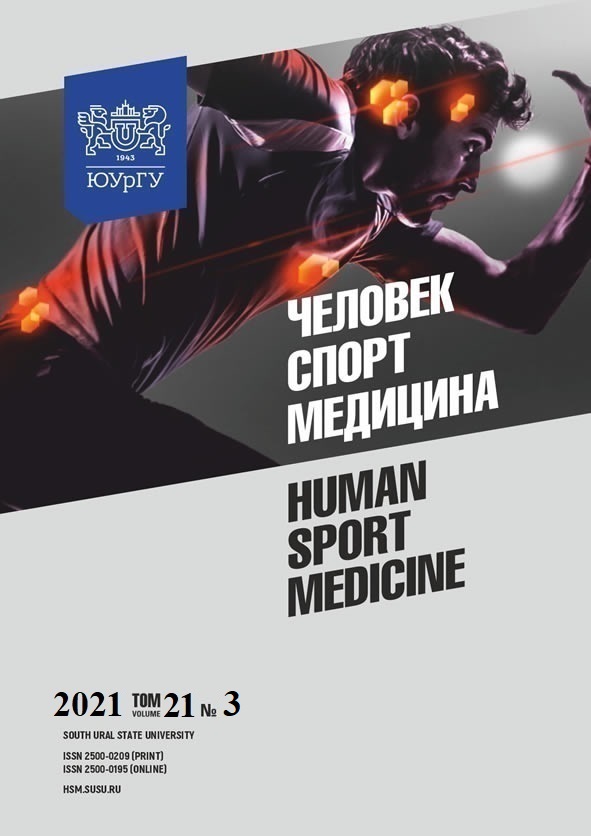IMMUNOLOGICAL MARKERS OF ADAPTATION POTENTIAL OF ATHLETES
Abstract
Aim. The paper aims to identify immunological markers and natural antibodies (Nabs) to endogenous bioregulators (EBs) involved in adaptation processes: beta-endorphin, orphanin, serotonin, dopamine, histamine, angiotensin, glutamate and GABA. Materials and methods. Blood samples were examined by an enzyme-linked immunosorbent assay (ELISA). The study involved athletes (n = 22), namely the fighters of Greco-Roman wrestling with a sports experience of 5 to 14 years, football players (n = 15) and hockey players (n = 28). Results. In Greco-Roman wrestlers, a significant increase in the levels of Nabs to β-endorphin, glutamate, GABA and dopamine was found with an increase in exercise intensity after 28 days after the start of training sessions. Nabs levels to orphanin were increased during the training process. In all athletes, regardless of sports experience, a synchronous increase in Nabs levels to glutamate and GABA was observed, which reflected the balance of excitation and inhibition at each stage of training. In football players, glutamate levels were of particular importance, while changes in the levels of orphanin and GABA were found only after exercise. From the very beginning, hockey players activated their systems with neurotransmitters (orphanin, glutamate, GABA), both at rest and under exercise. Under exercise, the number of athletes with an increased level of Nabs to glutamate increased to 82% compared to baseline. Conclusion. Thus, determining the status of antibodies to endogenous bioregulators will allow to differentiate the types and profile of the body's response to physical activity, as well as to investigate the possibility of recovery and correction of negative changes.
References
References on translit
Copyright (c) 2021 Human. Sport. Medicine

This work is licensed under a Creative Commons Attribution-NonCommercial-NoDerivatives 4.0 International License.















